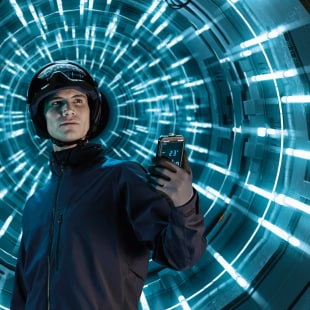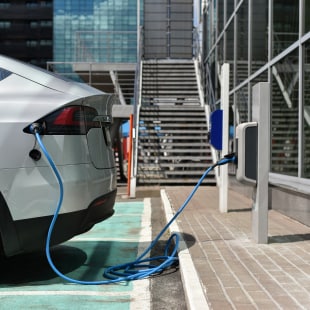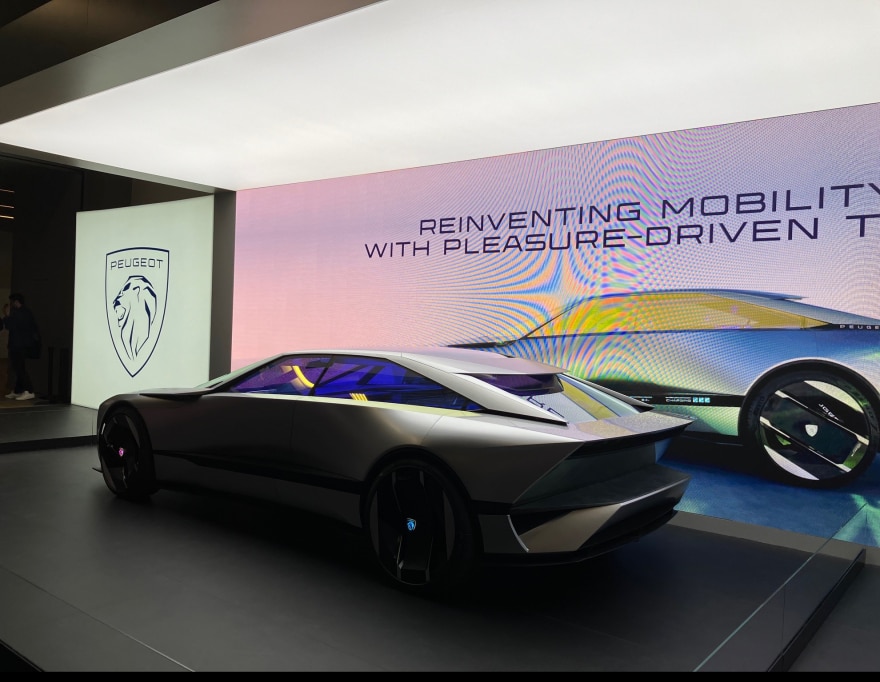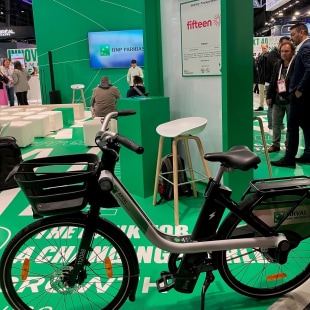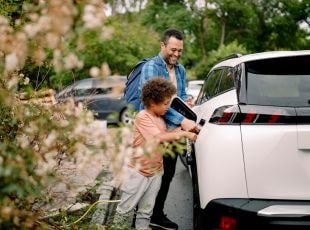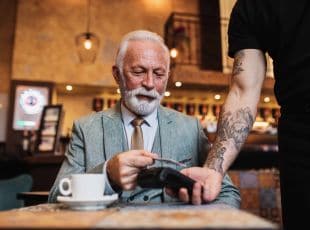1. Artificial Intelligence, superstar of Viva Technology 2024
“AI is the star of this edition and will be at the heart of everything you will find there”, announced Maurice Lévy in kicking off the 2024 Viva Technology trade fair. And AI did indeed take up the lion’s share of space and discussions. The now very rapid surge of generative AI, which offers the ability to interact with technology via natural language, is a major new milestone. An example of the general excitement: only one third of the OpenAI queue was able to attend the demonstration of Sora, its system for generating a video from a script produced by ChatGPT and supplemented with a multi-lingual voiceover generated by Voice Engine from a sample.
The latest version of ChatGPT, meanwhile, seems able to recognise drawings of Parisian tourist venues and to recommend an itinerary for getting to them. And while some feel that ChatGPT is almost synonymous with generative AI, it’s far from being the only model. Another one is Mistral AI, a partner startup of BNP Paribas Lab. Mistral AI is a French nugget that has confirmed its status as a challenger of the world’s leaders. “The technology we are developing provides two things; interactive access to knowledge and the creation of software able to behave non-binarily” sums up Arthur Mensch, cofounder, chairman and CEO of Mistral AI.
2. AI: a strategic challenge for companies
According to a survey by VivaTech and Wavestone, 63% of corporate managers see AI as the most promising technology for the future of their company. But what are the best tools to invest in? How do you implement AI? And what will its impact be on organisational set-ups and employees? “My first advice to companies preparing to take the plunge is this: don’t panic! We are still at Day 0”, said Rajat Taneja, President of Technology for Visa. In other remarks, Swami Sivasubramanian, VP for AI & Data Amazon Web Services, and an acknowledged AI expert, put this in pragmatic terms: “Begin by choosing the right model for your use case and by understanding what it is that makes you stand out: your data. The AI model you have chosen must become an expert in your data, not others’ data.”
This is a first step for, ultimately, democratising the development of applications using AI assistants. Such pragmatism can also be found within the BNP Paribas Group, said Sophie Heller, Chief Operating Officer, Commercial, Personal Banking & Services BNP Paribas, during a discussion on “AI and personalising the customer experience”: “We are approaching these developments very cautiously, guided by our customers’ needs. Innovation is a good thing when it resolves a problem and creates value. We continue to invest in LLMs and generative AI, but also, and most of all, in hiring, upskilling and training”.
Do you speak AI? Here’s how to:
- “AI” in short, or “traditional AI”, means a system that learns from data, in order to carry out specific tasks more simply and more rapidly than a human.
- “Generative AI”, or “GenAI” is used to create new data, for example in the form of text, code or images. Unlike its older cousin, generative AI can produce different results in response to the same question.
- These questions or requests are expressed in natural language, i.e., a language intelligible by humans, as opposed to a computer language.
- LLMs (large learning models) are models trained on vast sets of data to understand and create content in natural language.
- No, “fuzzy logic” is not AI that is running out of arguments. It’s what allows AI to identify degrees of truth, as opposed to mathematical binary reasoning, where the only options are 1 (“true”) or 0 (“false”).
3."Succes with AI" requires human intervention
AI may be the stuff of dreams, but it also has some people worried, even among tech stars. During an interactive videoconference, Elon Musk reiterated his support for AI regulation, affirming that “[his] greatest hope is Mars; [his] greatest fear is AI”. For everyone else, it's the impact of AI on employment that is a cause for concern. During a panel discussion on this subject, Lisa Heneghan, Global Chief Digital Officer, KPMG, said: “We don’t expect AI to truly replace humans, but persons using AI may replace those who don’t”. However, the issue of upskilling focused even more on interpersonal skills than technical ones: “Soft skills, human and social skills, are everything except soft! Cultivating a critical mind on a daily basis, one’s creativity, and one’s adaptability, all that counts more than ever”, said Tanuj Kapilashrami, Chief Strategy & Talent Officer, Standard Chartered.
Two priorities for companies: “demystify” technology and need to fully understand the potential and limitations of generative AI.
BNP Paribas at #VIVATechnology 2024
4. Cybersecurity and Ai: false friends or real enemies?
Who benefits the most from AI: cybercriminals or the guardians of the temple, who protect data and IT systems? As with all technology, it’s hard to say. To Guillaume Poupard, Deputy Chief Executive Officer of Docaposte, while “attackers are often the most skilled in using AI, AI will also make it easier to detect cyberattacks”.
The prevalence of attacks on companies are requiring banks, as trusted third-parties, to adapt. VivaTech was an opportunity for Bruno Dehem, Global Chief Information Security Officer, BNP Paribas CIB, to lay out some fundamentals of the Group’s strategy in this area. “We compile as much information as possible and are hiring new profiles who are data science experts. Deploying AI tools in-house makes it easier to process data and allows us to enhance our internal processes, for both developers and users”.
Such enhancements consist, for example, in tracking code vulnerabilities better and in classifying internal data in order to identify and secure the most sensitive of that data. Bank customers are better protected, and analysts can automate certain tasks, while focusing on more complex issues.
5. La cybersecurity affects everyone
Like AI, cybersecurity is not a merely a technical issue; the human angle is still important. “Far more than infrastructures, it’s the human link that is still the most vulnerable”, noted Pierre Ruhlmann, Chief Operating Officer, BNP Paribas Commercial & Personal Banking in France. “Company managers must be supported, along with their employees, something that we also do in-house”. Vulnerability is even greater as data are nowadays spread out over the four corners of the Internet – a precious resource for cybercriminals. “It’s because of this digital footprint that 80% of attacks are by ruse, without any real technical skills”, says Philippe Luc, chairman and CEO of Anozr Way, a partner startup of BNP Paribas Lab. “It is comforting to know that a bank like BNP Paribas is taking an interest in this human issue”. Anozr Way’s solution consists precisely in scaling up defence of the digital footprint to keep from being an easy target and to disseminate this capacity as widely as possible.
Indeed, cybersecurity poses real questions of inclusion. Hence, the importance of education to facilitate awareness at companies, with customers and in society at large…and potentially draw new people into the profession from underrepresented populations. “Becoming aware of data risk means understanding that cybersecurity helps protect us, our lives and the lives of others”, says Sahar Habib, IT security and cybersecurity assistant at BNP Paribas and a member of Sistech, an association that empowers uprooted and displaced women via tech professions.
6. A VIVA Technology that looked like an EV show
While AI was the star of this eighth edition of Viva Technology, mobility was a clear second place. Tesla, which usually stays away from tech fairs, drew crowds with the European unveiling of the its Cybertruck. In addition to the autonomy of its batteries or recharging time, designers quite obviously focused on the quality of the onboard experience. A newcomer, Peugeot, unveiled the Inception concept car and the Hypersquare steering wheel, which includes steer-by-wire technology without a steering column, already featured in the Cybertruck for more comfortable and intuitive driving. Due out in 2026, Hypersquare plans to outdo the Cybertruck with a rectangular shape prefiguring autonomous driving and buttons with features that can be personalised for a unique driving experience. The big revelation in mobility at the trade fair was Software République’s U1st Vision demonstrator: a commercial EV transformed into a mobile medical centre, able to offer new nearby prevention and diagnostic services – a valuable prospect for medically underservice communities.
VIVA Technology 2024 - "Inception concept" by Peugeot
7. Multimodal mobility must be abble to rely on a suitable ecosystem
Do all the mobility options explored at Viva Technology have anything in common? Yes, they do. According to the automakers, in accelerating the energy transition and meeting new expectations of society. 65% of European employees believe that their daily means of transport affects their career decisions and want their employer to be involved in their mobility, according to the Arval Mobility Observatory.
This was an opportunity to show that the offering of Arval Mobility Hub, which mixes cars and e-bikes, meets these expectations from the most efficient angle possible: convenience. “Having the opportunity to use various forms of transport at a given moment, depending on the itinerary and conditions is the key to success”, says Amira Haberah, co-founder and CRO of Fifteen, a supplier of online e-bikes, another partner startup of BNP Paribas Lab.
Combining these electric modes of transport requires a suitable ecosystem. To Marie-Frédérique Germain, Head of Transversal Mobility Offerings, BNP Paribas Personal Finance, “The massive increase in solar panels being installed and the electrification of vehicles are a revolution on the market. Europe is heading towards new business models”. Coordinating the network and optimising green energy while creating value is no easy task. The solution? Integrating electric cars into energy markets, explains Ivan Baichman, Head of Strategy, Arval: “Arval Energy bridges mobility and energy by optimising recharge cycles outside of peak times and by prioritising the use of renewable energies”. It wasn’t just on roads that innovation was the star. There were also the low-carbon river and sea shuttles designed by Neptech, a partner startup of BNP Paribas Lab.
8. Paying with Teams: innovation from BNP Paribas and Microsoft!
Generative AI and data constitute an extensive transformation in the financial sector. In his remarks, Laurent David, Deputy Chief Executive Officer and Chief Operating Officer of BNP Paribas shared this conviction and stressed the importance of partnerships with tech leaders such as Kayrros and Microsoft. The event was an opportunity to present the result of one of these partnerships at the Group stand: a service developed with Microsoft and the Stancer app to generate payments directly on Teams. “This is a global first, and we are very proud to have brought it about together”, said Frédéric Tardy, General Manager France Microsoft. “Innovation exists in France, and it goes through groups like BNP Paribas!”.
By integrating transactional tools with a conversational interface, which is closer to actual uses, this solution further enhances the potential of collaborative communication tools.




